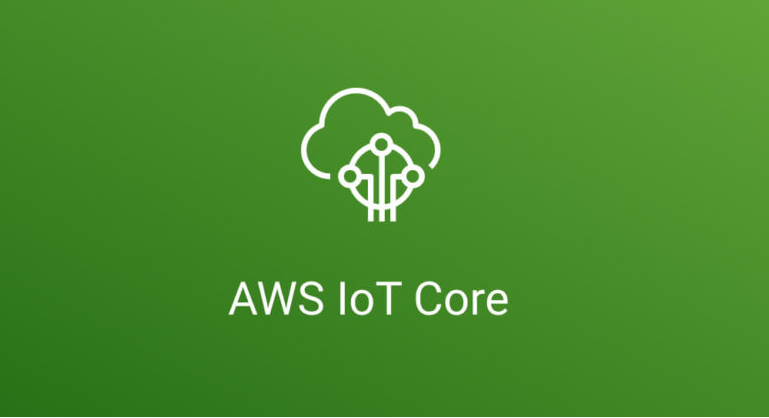"Revolutionizing Connectivity: Unleashing the Power of AWS IoT Core"
 Sumit Mondal
Sumit Mondal
Introduction:
In the dynamic landscape of technology, the Internet of Things (IoT) has emerged as a game-changer, connecting devices and systems to facilitate seamless communication and data exchange. At the forefront of this transformative wave is Amazon Web Services (AWS) IoT Core, a robust and scalable platform that empowers developers to build and manage IoT applications effortlessly.
Understanding AWS IoT Core:
AWS IoT Core serves as the backbone for IoT applications, providing a secure and reliable infrastructure to connect and manage devices. It enables seamless communication between devices, collects and analyzes data, and allows developers to create intelligent applications that respond to real-world scenarios.
Key Features:
Device Communication: AWS IoT Core facilitates bidirectional communication between devices and the cloud, ensuring that data flows seamlessly and securely. This is crucial for real-time monitoring, control, and analysis.
Security: Security is paramount in the world of IoT. AWS IoT Core ensures end-to-end security with device authentication, authorization, and encryption, safeguarding data from potential threats.
Scalability: As the number of connected devices grows, AWS IoT Core effortlessly scales to handle the increasing load. This scalability is fundamental for businesses looking to expand their IoT deployments.
Rule Engine: The platform's rule engine allows developers to define actions based on incoming data from devices, enabling automation and real-time decision-making.
Hands-On with AWS IoT Core:
Let's dive into a practical example to illustrate the power of AWS IoT Core. Suppose we have a fleet of smart vehicles equipped with sensors, and we want to monitor their status in real-time.
Step 1: Device Registration
The first step is to register our devices with AWS IoT Core. Each vehicle is considered a device, and AWS provides a simple process to register them programmatically or manually through the AWS Management Console.
Step 2: Device Communication
Once the devices are registered, they can start communicating with AWS IoT Core. The devices can publish data, such as GPS coordinates and engine status, to specific topics. Subscribers can then listen to these topics to receive real-time updates.
# Sample Python code for publishing data from a smart vehicle
import boto3
import json
# Initialize IoT client
iot = boto3.client('iot-data', region_name='your-region')
# Sample data from a smart vehicle
vehicle_data = {
'vehicle_id': '123',
'latitude': 37.7749,
'longitude': -122.4194,
'engine_status': 'running'
}
# Publish data to a specific topic
iot.publish(
topic='vehicle/status',
payload=json.dumps(vehicle_data)
)
Step 3: Rule Engine for Automation
Now, let's leverage the AWS IoT Core rule engine to automate actions based on incoming data. For instance, if the engine status indicates a problem, we can trigger an alert.
-- Sample SQL rule to detect engine issues
SELECT * FROM 'vehicle/status'
WHERE engine_status = 'faulty'
This rule will trigger an action, such as sending a notification or initiating a maintenance request, whenever a vehicle reports a faulty engine status.
Step 4: Device Shadow for State Management
AWS IoT Core provides a feature called Device Shadow, allowing you to maintain the last reported state of a device even when it's offline. This is invaluable for scenarios where devices might lose connectivity.
Real-World Applications:
1. Smart Home Automation:
Imagine a smart home where devices such as thermostats, lights, and security cameras are connected through AWS IoT Core. Homeowners can remotely monitor and control these devices, creating an intelligent and energy-efficient living space.
2. Industrial IoT (IIoT):
In the industrial sector, AWS IoT Core can be applied to monitor equipment health, optimize operations, and predict maintenance needs. For example, sensors on manufacturing machinery can transmit data to AWS IoT Core, allowing predictive maintenance based on real-time analytics.
3. Healthcare IoT:
Healthcare providers can use AWS IoT Core to connect and manage medical devices. This facilitates remote patient monitoring, timely alerts for critical conditions, and streamlined data collection for healthcare analytics.
Conclusion:
AWS IoT Core stands as a pillar of innovation in the IoT realm, offering a comprehensive and scalable solution for developers to build intelligent and connected applications. As demonstrated through our hands-on example, the platform's features, security, and flexibility make it a go-to choice for businesses looking to harness the potential of the Internet of Things. Whether it's monitoring smart vehicles, automating home environments, or optimizing industrial processes, AWS IoT Core is at the forefront of transforming ideas into reality. Embrace the future of connectivity with AWS IoT Core and unlock a world of possibilities for your IoT projects.
Subscribe to my newsletter
Read articles from Sumit Mondal directly inside your inbox. Subscribe to the newsletter, and don't miss out.
Written by

Sumit Mondal
Sumit Mondal
Hello Hashnode Community! I'm Sumit Mondal, your friendly neighborhood DevOps Engineer on a mission to elevate the world of software development and operations! Join me on Hashnode, and let's code, deploy, and innovate our way to success! Together, we'll shape the future of DevOps one commit at a time. #DevOps #Automation #ContinuousDelivery #HashnodeHero